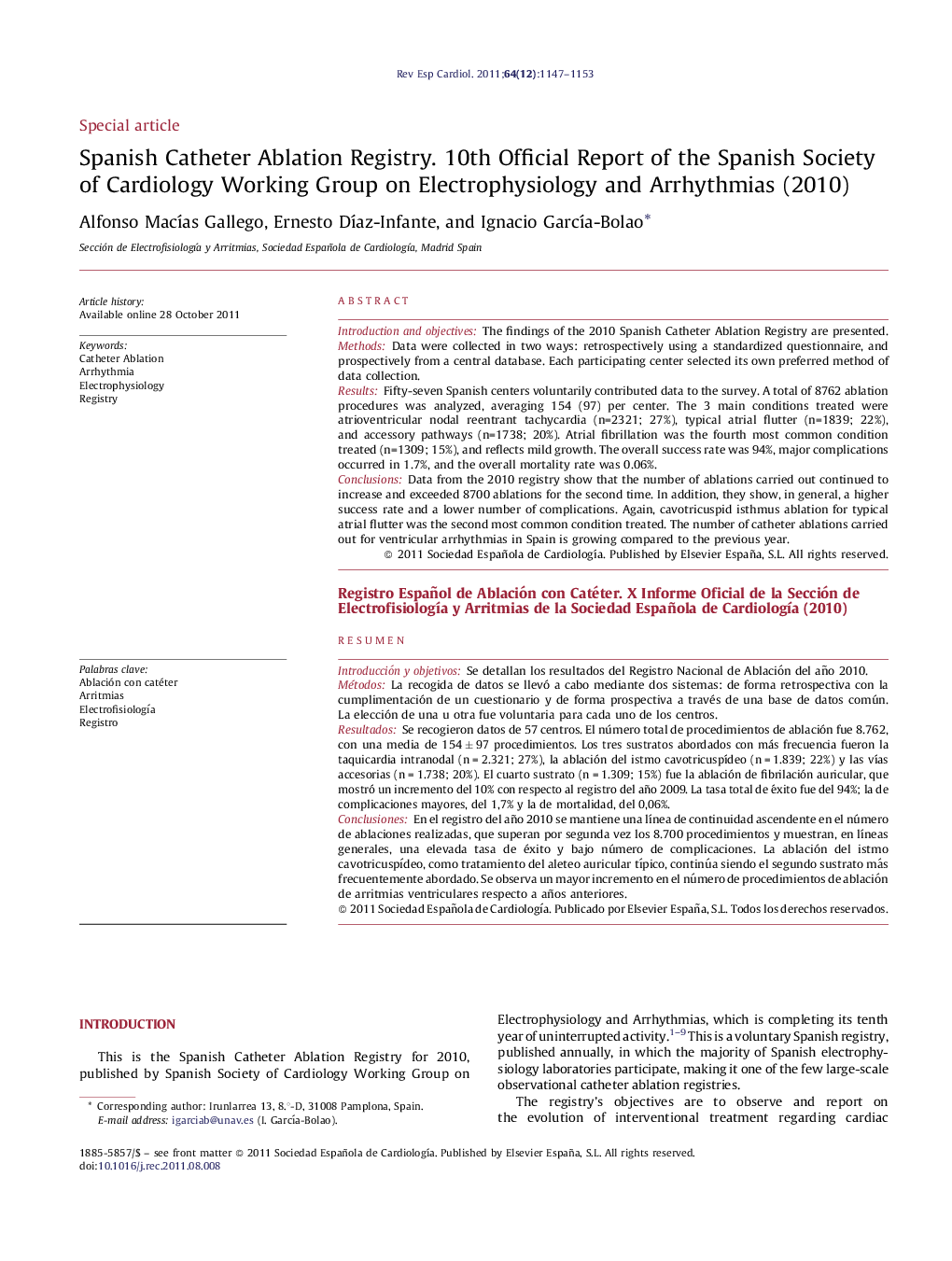| Article ID | Journal | Published Year | Pages | File Type |
|---|---|---|---|---|
| 3016732 | Revista Española de Cardiología (English Edition) | 2011 | 7 Pages |
Introduction and objectivesThe findings of the 2010 Spanish Catheter Ablation Registry are presented.MethodsData were collected in two ways: retrospectively using a standardized questionnaire, and prospectively from a central database. Each participating center selected its own preferred method of data collection.ResultsFifty-seven Spanish centers voluntarily contributed data to the survey. A total of 8762 ablation procedures was analyzed, averaging 154 (97) per center. The 3 main conditions treated were atrioventricular nodal reentrant tachycardia (n=2321; 27%), typical atrial flutter (n=1839; 22%), and accessory pathways (n=1738; 20%). Atrial fibrillation was the fourth most common condition treated (n=1309; 15%), and reflects mild growth. The overall success rate was 94%, major complications occurred in 1.7%, and the overall mortality rate was 0.06%.ConclusionsData from the 2010 registry show that the number of ablations carried out continued to increase and exceeded 8700 ablations for the second time. In addition, they show, in general, a higher success rate and a lower number of complications. Again, cavotricuspid isthmus ablation for typical atrial flutter was the second most common condition treated. The number of catheter ablations carried out for ventricular arrhythmias in Spain is growing compared to the previous year.
ResumenIntroducción y objetivosSe detallan los resultados del Registro Nacional de Ablación del año 2010.MétodosLa recogida de datos se llevó a cabo mediante dos sistemas: de forma retrospectiva con la cumplimentación de un cuestionario y de forma prospectiva a través de una base de datos común. La elección de una u otra fue voluntaria para cada uno de los centros.ResultadosSe recogieron datos de 57 centros. El número total de procedimientos de ablación fue 8.762, con una media de 154 ± 97 procedimientos. Los tres sustratos abordados con más frecuencia fueron la taquicardia intranodal (n = 2.321; 27%), la ablación del istmo cavotricuspídeo (n = 1.839; 22%) y las vías accesorias (n = 1.738; 20%). El cuarto sustrato (n = 1.309; 15%) fue la ablación de fibrilación auricular, que mostró un incremento del 10% con respecto al registro del año 2009. La tasa total de éxito fue del 94%; la de complicaciones mayores, del 1,7% y la de mortalidad, del 0,06%.ConclusionesEn el registro del año 2010 se mantiene una línea de continuidad ascendente en el número de ablaciones realizadas, que superan por segunda vez los 8.700 procedimientos y muestran, en líneas generales, una elevada tasa de éxito y bajo número de complicaciones. La ablación del istmo cavotricuspídeo, como tratamiento del aleteo auricular típico, continúa siendo el segundo sustrato más frecuentemente abordado. Se observa un mayor incremento en el número de procedimientos de ablación de arritmias ventriculares respecto a años anteriores.
